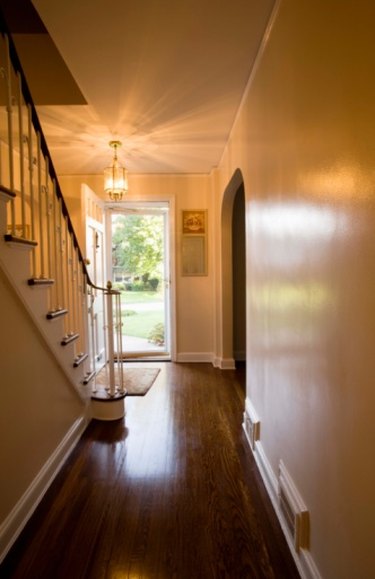Things You'll Need
Tongue-and-groove board
Level
Hammer
Nail set
Fasteners
Scrap board

Tongue-and-groove boards are used in a number of construction designs, such as wood flooring, ceilings, walls and wainscoting. Tongue-and-groove boards are available in a wide variety of wood types. Each board features one slotted edge (the groove) and one edge with a thin ridge (the tongue) that matches the slotted edge of another board. When putting tongue-and-groove boards together, the groove slides over the tongue of the previous course. Once a board is placed, you'll place nail fasteners at 45-degree angles through the tongue into the subfloor, rather than on top of the board where it can be seen. Some projects require different nail placement to accommodate local building codes.
Step 1
Lay the first course of tongue-and-groove board in the desired location. Plum the board with a level if you're performing vertical construction.
Video of the Day
Step 2
Nail the fasteners directly through the face of the first course of tongue-and-groove board, near the groove. Countersink the nail heads with a nail set and hammer.
Step 3
Secure the opposite end of the board by angling nail fasteners at a 45-degree angle and hammering them where the lip meets the board.
Step 4
Lay in the following course of tongue-and-groove board next to the first. Align the groove with the tongue and slide the board in place. Rest a piece of scrap wood next to the board's tongue and hit it with the hammer if the second board resists placement directly against the first board with no gap.
Step 5
Secure the course by angling the fasteners at a 45-degree angle and placing them where the tongue meets the board. Continue with each course until the project is finished.
Tip
Space the fasteners 12 to 24 inches apart when securing tongue-and-groove boards. Placing the fasteners too close may cause the boards to split.
Warning
Wear safety glasses and hearing protection when using power tools.
Video of the Day